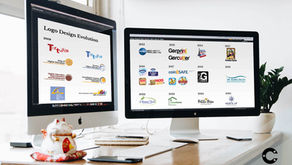Design a Stunning Online Portfolio
- Claudia Carranza

- Jul 13, 2022
- 3 min read
Updated: Oct 12
An online portfolio is one of the best opportunities to show the world who you are as a creative artist and professional, involved in your projects with wide expertise. To help you make the right choices when creating your new online presence, I advise you to find inspiration with great website templates that spark your imagination for a beautiful showcase of your works.

Nowadays, website building platforms are very easy to use and thus create a professional website in a matter of hours. I would recommend using any of these DIY Portfolio Builders that I'm going to list, so you can create a website with a free plan or a free trial. If you want to make something up at an advanced level, I definitely recommend taking advantage of the fabulous templates that WordPress.org offers. In my case, I decided to choose Wix.com as my favourite free website building platform because it offers me functional templates, modern designs and intuitive guidelines, but if you want something faster and very easy to use, you could go for Canva.com, which will help you to create graphic projects from scratch with interesting templates.
1. Wix
Design and build your own high-quality websites. Whether you’re promoting your business, showcasing your work, opening your store or starting a blog, you can do it all with the Wix website builder.
2. Webflow
Build custom blogs, portfolios, e-commerce stores, and more with a flexible CMS. Experience the power of HTML, CSS, and JavaScript in a 100% visual canvas. No code website builder.
3. GoDaddy
Create your own modern, professional website with no technical knowledge required. Swipe-to-style interface. Unlimited pages. Professional imagery. Includes marketing tools.
4. WordPress.org
Easily create your website using stunning templates and get your ideas online. Beautiful designs, powerful features, and the freedom to build anything you want. WordPress is both free and priceless at the same time.
5. Adobe Portfolio
Quickly and simply build a personalized website to showcase your creative work with Adobe Portfolio. Now included free with any Creative Cloud subscription.
6. Canva
Canva is a free-to-use online graphic design tool. Use it to create social media posts, presentations, posters, videos, logos, portfolios, and much more. This is a free tool that allows anyone to work with photo editing and layouts all within an easy-to-use platform.

Additionally, here is a short list of the most important things to keep in mind to design your portfolio professionally:
1. Like any other project
Having a sharp online portfolio is a must for every designer. Your portfolio as a whole should be an experience that tells a story. Search for website design inspiration, browse impressive portfolios and take notes of web design trends. Remember to take equal care of the mobile version of your site too, so make sure you've checked their user experience (UX).
2. Quality over quantity
Select only your absolute best pieces to show, trusting them to shine and impress site visitors. It's recommended that no more than a total of six to ten projects. Showcasing a limited number of projects allows you to present each one thoroughly, including all the relevant details and clearly explaining their backstory.
3. Focus on presentation
Take the time to set up a photo shoot for your projects. Think of your colour palette, props, and settings by creating interesting images that capture the essence of your work. If the photoshoots are not possible, mockups can also achieve satisfactory results, so add them to your personal aesthetics, making them your own.
4. Easy to maintain
Your portfolio website will be with you for a long time. Build an online portfolio that’ll be easy to get back to for updates and revisions down the line. Make your portfolio website easy to maintain by saving your font and colour themes, your page layouts, and other presets.
5. Get found on Google
The best way your work online is by going about your SEO (Search Engine Optimization). Some of the best practices for improving your portfolio’s SEO are filling in metadata for your images and pages, choosing a good domain name, and making sure you use strategic keywords that Google will associate with your website.














Comments